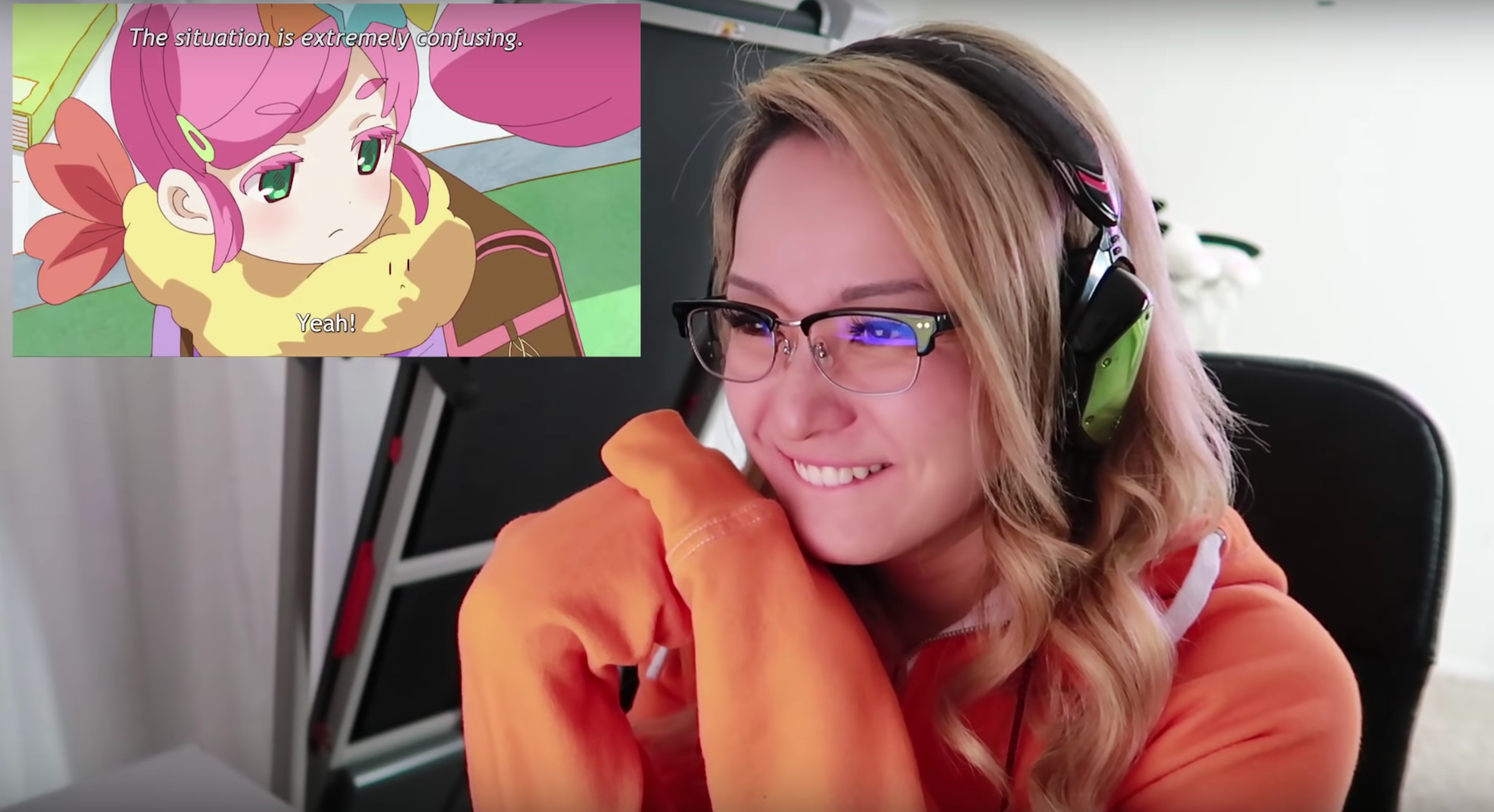Create a free profile to get unlimited access to exclusive videos, sweepstakes, and more!
Nerdy Jobs: The artist who translates anime for an American audience

Reina Scully has translated Japanese anime and dramas since high school, a passion that has blossomed into a very unique career.
First, her translating earned her a coveted job working for anime streaming juggernaut Crunchyroll. In addition to that, she's a YouTuber, occasional voiceover artist, and unofficial ambassador of Japanese culture. Each umbrella title comes with a multitude of projects beneath it, making for an endlessly busy schedule.
Scully has hosted on the now-defunct YouTube channel SourceFedNERD, voiced characters in RWBY and Urahara, and moved to Japan, all while building an online brand in addition to her translating work. SYFY WIRE got in touch with her to talk about being an internet person, how she got into translating anime, and what it's like to put together your own job description
"I would say I started my digital career as a translator knowing that it was a specialized skill that not many people possess," she told SYFY WIRE, of her introduction to the field. "I've been translating and interpreting professionally since high school for a myriad of different companies so I was already well trained in that job field and wanted to gear it towards entertainment, which is when I started laser focusing on translating Japanese dramas and anime."
Few people realize the work that goes into anime translation, especially when translating Japanese to English. The Japanese language uses a completely different sentence structure than English, doesn't use articles (words like "the" and "a" that determine whether a noun is general or specific), and uses honorifics like "onii-chan" and "senpai" when English doesn't. It relies heavily on the context of a situation; who's around you and what's happening in the moment, something hard to adapt to an audience of a totally different nationality.
That adaptation is called "localization" in the biz, and it can give translators a very hard time. To do it right, you have to have a very fine understanding of the particulars of both the culture you're translating from and the target audience you're translating to, and subtle changes are often made to make the content relatable to foreigners. The anime Doraemon, for example, replaces chopsticks with forks and yen with dollars in the American market version. Scully says that's something not a lot of people get about translation.
"I wish people knew the difference between translating and transliterating. I described it in a video long ago, but translating is an art, not a science, and having a strong command of both languages is necessary to execute the nuance of what is being said in either language. There usually isn't an exact answer or an exact translation and I wish people understood that better."
She also explains a common trope associated with the world of anime: off-the-wall titles that seem to result from bad translation, such as Encouragement of Climb. Scully, who's translation resume includes well-known anime Akame ga Kill! and Baby Steps, says this is actually the result of pushback from the anime's creators, who want certain English words included in the title when translated for the U.S. market. Sometimes they listen when a translator tells them it won't read well, but sometimes, they're insistent.
As she explains in her YouTube video "Why Anime Translations Are WEIRD":
"…we are just simply 100 percent at the mercy of whatever Japan's publishers and creators want in order to preserve their work. That means Japan's anime publishers have certain words, phrases, names that they want specifically in their English localizations even if it isn't proper English."
Scully was born in Japan, came to the U.S. with her parents at a young age, and spent most of her life here before she moved back to Japan in 2018. On YouTube, her videos cover everything from hentai, to anime genres, to why we see Japanese people wearing face masks so often. But while she's embraced it now, she wasn't always so comfortable with her heritage:
"I actually used to abhor being Japanese when I was younger and I wanted to be anything but Asian growing up," Scully says. "I just wanted to fit in and I didn't appreciate being bullied for bringing extravagant (bento) lunches to school. But during the end of middle school I started realizing how powerful and moving our culture was and wanted others to understand that depth rather than fetishizing us or simply chalking up our existence to being 'exotic.'"
At the beginning of last year, Scully spoke out after Logan Paul posted his now-infamous Aokigahara video (and subsequent lukewarm apologies) to YouTube. She criticized Paul on her channel for adding to a dehumanizing narrative of Japanese people, saying that she didn't think he "saw the Japanese as people."
Her video was one of many condemning Paul, but was backed by her own experiences growing up in the U.S. as a Japanese national. "After watching some clips of Paul's other vlogs in Japan…there is definitely a sliver of…what I used to experience when people used to talk down to me because I was foreign," she says in the video.
The experienced hasn't dampened her enthusiasm for educating people on Japanese culture, and today YouTube, translating, and upcoming voiceover projects take up the majority of Scully's time. When asked if she might choose just one thing and go forward with it, she said she preferred the variety:
"I've always had more than one job and I feel sated having multiple jobs or responsibilities so I will probably continue juggling multiple careers. After moving to Japan, sharing more about it has expectedly become easier so I'm excited to keep going in this direction. It's also fun teaching Japanese people about America as there are apparently a lot of misconceptions about it as well."


























